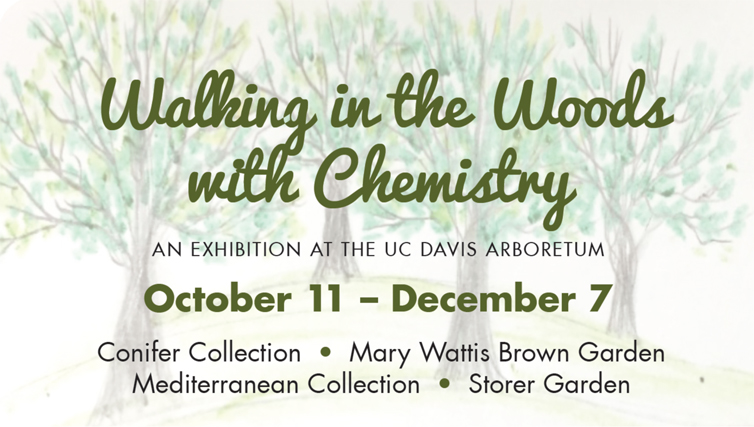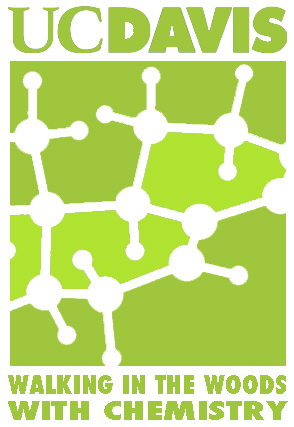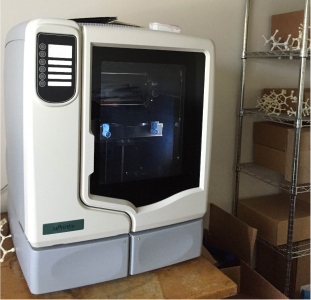


With support from the UCD Arboretum staff, especially Elaine Fingerett who has been with us since the start, we embark on this journey of Walking in the Woods with Chemistry (WWC).
Come walk through this exhibit with us and learn about molecules produced by plants, how they are used in our daily life, and how these molecules have inspired research on UCD campus.Dateline coverage, Aggie coverage, Chemical & Engineering News coverage
3D printer files for all molecules
from Nhu Nguyen, graduate student and mastermind behind the WWC project...
Art has always been a big part of my life, and I hope this project illustrates a place where art meets science, as well as offering a glimpse into the many connections between science and nature. I also hope this exhibit serves as an example of an area beyond chemistry where theoretical and experimental chemists can collaborate. Not only in the field of chemistry, I think the world is a more beautiful place with diversity, and it is possible for us to work together if we are willing to look beyond our differences and find the common values we share.
from Dean Tantillo, professor of chemistry and modeler of molecules...
This exhibit allows me to combine my interests in trees, molecules they produce and walking through the woods! For more information on research in my group on the chemical origins of molecules found in nature, click here.
from Philipp Zerbe, professor of plant biology and student of nature...
Mankind has used plants for food, medicine and shelter for millennia, and today natural chemicals from plants represent some of the most important and widely used flavors, fragrances and pharmaceuticals. Our research aims to better understand how plants produce these many thousands of compounds and develop sustainable production systems for a broader range of plant products. With this exhibit, I hope to remind us how much every day modern life depends on basic natural resources and highlight the collaborative research at UCD to improve the availability of these resources for the end users, you and me! For more information on research in my group, click here.
Behind the scenes...
How did this project come about?
Come join us at the opening event and hear a little story about this…
Some other names proposed for the project…
“The Arboretum Terpene Project: Come Walk with Me”… No? Well, Nhu will keep this name for her music album then.
“Meeting Molecules in the Woods”… Hmm, not sure the university would approve of this name.How do we know which compounds are in what tree and how we can produce them?
How were the 3D models produced?
First, the structures were built in a computer using a program called GaussView 5.0.
We then used quantum chemistry to optimize the geometries of each molecule and used a program called AsteriX to convert the resulting outputfiles into files that can be read by our 3-D printer (for a movie, click here).

The freshly printed out model is still attached to supporting materials...
...which are then dissolved away by soaking in a basic solution to produce a final model.
Special thanks to...
The UCD Arboretum for hosting the exhibit, Henry Wedler for giving us access to the 3-D printer, and Tim Newman for showing us how to operate the printer.
Stay in touch with us and offer comments here, or send an email to 13terpenes@gmail.com.